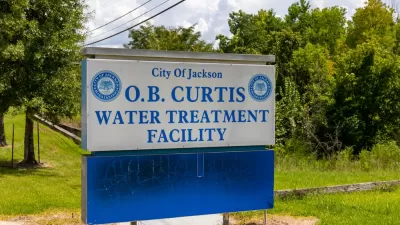Pretty Prairie has water with very high levels of nitrates, and lots of farmers that need to use nitrates if they want to keep the local economy going.

This month’s issue of Harper’s has a long piece by Elizabeth Roye that’s worth reading just for its exploration of how difficult it is for rural areas to provide clean drinking water for their small populations when their way of life is already threatened.
It takes place in Pretty Prairie, Kansas, where the content of nitrates in the water—due to fertilizer used on farmland that comprises over 90 percent of the land—has, for decades, exceeded the limits established by the EPA.
A reverse-osmosis plant has always been only barely feasible economically, but as Royte learns, trying to get the farmers to stop using as much fertilizer is an equally challenging proposition: “Less fertilizer means lower yields, and if farmers earn less, they might default on loans, exacerbating the shrinking of the town.”
In the end, a place with 320 ratepayers has now borrowed enough to build a plant that can remove nitrates from the water, and the town clerk tells Royte, with relief, that they will never have to worry about water again.
“That may be true,” Royte writes, “but I suspected Brace’s sense of relief—and the community’s—was related more to social, rather than civil, engineering. A decision had been made: the farmers would do their best, within the bounds of their economies, and the townsfolk—with a onetime boost from the feds—would continue uncomplainingly to clean up after them.”
FULL STORY: Drinking Problems

Planetizen Federal Action Tracker
A weekly monitor of how Trump’s orders and actions are impacting planners and planning in America.

Map: Where Senate Republicans Want to Sell Your Public Lands
For public land advocates, the Senate Republicans’ proposal to sell millions of acres of public land in the West is “the biggest fight of their careers.”

Restaurant Patios Were a Pandemic Win — Why Were They so Hard to Keep?
Social distancing requirements and changes in travel patterns prompted cities to pilot new uses for street and sidewalk space. Then it got complicated.

Platform Pilsner: Vancouver Transit Agency Releases... a Beer?
TransLink will receive a portion of every sale of the four-pack.

Toronto Weighs Cheaper Transit, Parking Hikes for Major Events
Special event rates would take effect during large festivals, sports games and concerts to ‘discourage driving, manage congestion and free up space for transit.”

Berlin to Consider Car-Free Zone Larger Than Manhattan
The area bound by the 22-mile Ringbahn would still allow 12 uses of a private automobile per year per person, and several other exemptions.
Urban Design for Planners 1: Software Tools
This six-course series explores essential urban design concepts using open source software and equips planners with the tools they need to participate fully in the urban design process.
Planning for Universal Design
Learn the tools for implementing Universal Design in planning regulations.
Heyer Gruel & Associates PA
JM Goldson LLC
Custer County Colorado
City of Camden Redevelopment Agency
City of Astoria
Transportation Research & Education Center (TREC) at Portland State University
Camden Redevelopment Agency
City of Claremont
Municipality of Princeton (NJ)



























